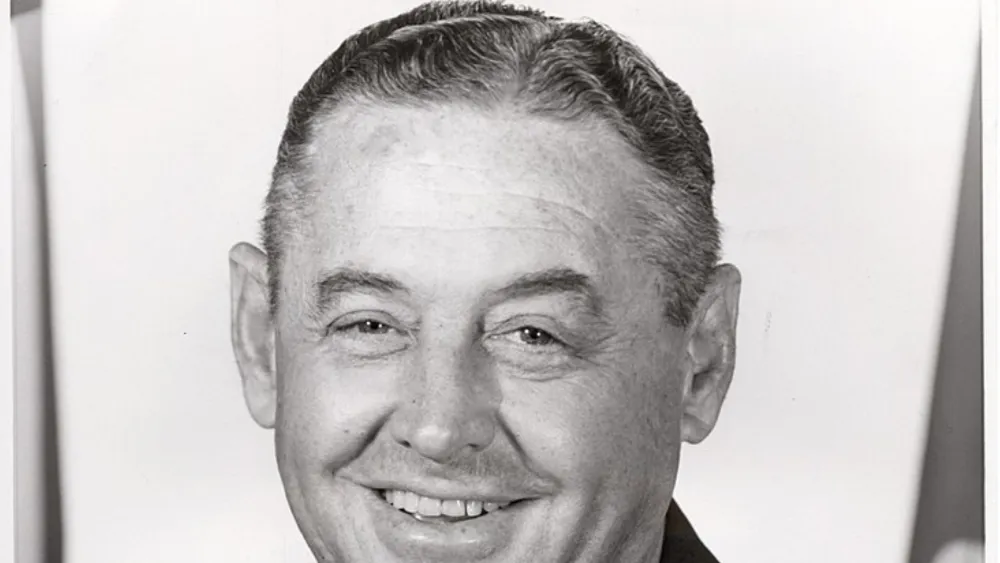Leslie E Brown was born on July 7, 1920, in Toppenish, Washington. He completed high school in 1938 alongside his close friend and future Marine General, Jay W. Hubbard. After high school, Leslie attended Compton College in California before enlisting in the U.S. Marine Corps in 1940.
In his early service, he served aboard the USS Mississippi as part of the Marine detachment, fulfilling sea duties for three years. During this time, Brown advanced in rank to a non-commissioned officer (NCO). In 1940, they transferred him to the 2nd Marine Regiment, stationed in New Zealand.
In June 1943, Leslie Brown received a field promotion to second lieutenant. He was then assigned as a platoon leader in the Weapons Company of the 6th Marine Regiment, serving under the command of Colonel Maurice G. Holmes.
In November 1943, Brown’s regiment was crucial in the 2nd Marine Division in the Amphibious Assault on Tarawa Atoll in the Gilbert Islands. During this intense campaign, Leslie Brown’s leadership skills shone through, and he quickly rose to the rank of first lieutenant.
Heroic Actions during the Battle of Saipan
Lieutenant Brown’s remarkable leadership and courage during the Battle of Saipan in June 1944 exemplify valor in adversity. On June 16, 1944, heavy enemy fire struck the landing craft under his command. As a result, it caused it to become engulfed in flames.
Amid this harrowing situation, Lieutenant Brown exhibited extraordinary bravery. He ordered the craft’s immediate abandonment as extinguishing the inferno proved futile. Without hesitation, all his men courageously leaped into the water, seeking safety amid the chaos and danger.
While making his way toward the shore, Lieutenant Brown’s keen eye spotted a wounded soldier ensnared by ropes within the blazing and ammunition-laden landing craft. Undeterred by the imminent threat of exploding munitions, he demonstrated unparalleled selflessness by returning to the burning vessel.
With incredible resolve, he rescued the wounded soldier, carefully guiding him into the safety of the water. In a remarkable act of kindness, Lieutenant Brown provided his life belt to ensure the soldier’s well-being and then heroically towed him to safety.
Leslie E Brown and his Transition to Aviation
Following his service in the battles at Tinian and Okinawa, Leslie E Brown returned to the United States in September 1945. His unwavering commitment to duty led to his assignment as an instructor at Marine Corps Schools in Quantico, Virginia.
Subsequently, in October 1945, he received a transfer to Headquarters Marine Corps in Washington, D.C., where he served within the Discipline Division in the capacity of a legal officer. In December 1945, he was reassigned to the Judge Advocate General Office, U.S. Navy, where he became a General Court Martial Review Officer.
In April 1946, Brown embarked on a new chapter in his military career by applying for flight training. In August 1947, Leslie Brown earned the designation of Naval Aviator. His first aviation assignment was at Marine Corps Air Station El Toro, California. Where he was initially attached to VMF-224 and later to the renowned VMA-214.
Over time, Brown achieved qualifications in various types of jets, transport aircraft, and helicopters used by the Marine Corps. His career included significant milestones, such as being the first Marine to pilot a jet in combat during the Korean War in 1950.
Education and Career Progression of Leslie E Brown
Furthermore, during his time at Oklahoma State University, he not only excelled academically but also actively participated in campus activities, demonstrating his commitment to personal and professional growth.
Throughout his illustrious career, his dedication and leadership qualities were evident in the successful execution of his diverse staff assignments. As secretary to the general staff and Joint Chiefs of Staff project officer at Headquarters Marine Corps, he played a pivotal role in strategic planning and coordination.
His role as logistics operations officer for the Fleet Marine Force, Pacific, showcased his expertise in ensuring efficient logistical support for military operations.
Later in his career, he was appointed to the crucial position of deputy J-3 (Operations) for the United States European Command. It is where the effectiveness of the command benefited from his strategic insights.
Brown served as the chief of staff at Headquarters Marine Corps. So, he demonstrated his capacity to handle challenging duties.
In the end, his extraordinary odyssey culminated in his selection as the Fleet Marine Force, Pacific’s commanding general, where he commanded with distinction and continued to make a vital contribution to the mission and success of the Marine Corps.
Leslie E Brown and his Distinguished Career
After an accomplished and dedicated service to the Marine Corps, Leslie Brown retired on October 1, 1978, marking the conclusion of a remarkable career that spanned decades.
Tragically, Leslie Brown passed away on September 12, 1997, near Palm Springs, California. He left behind a legacy of leadership in the United States Marine Corps. This continues to inspire and be remembered to this day.
A Lifelong Influence on the Marine Corps
Throughout his retirement, Leslie Brown remained an influential figure within the Marine Corps community. He actively participated in Veterans’ organizations and mentored younger generations of Marines, sharing his wealth of experience and leadership insights.
Leslie Brown’s legacy extends far beyond his military service. His dedication to the core values of honor, courage, and commitment continues to resonate with service members and civilians alike.
His extraordinary life is evidence of the enduring spirit of those who serve their country selflessly and with unwavering dedication. Furthermore, future generations will cherish his enduring legacy.

Lieutenant Brown’s Silver Star
The award of the Silver Star to Lieutenant E Brown not only proves his exceptional valor. It is also a symbol of the profound dedication he exhibited to the highest ideals of military service.
Brave individuals like Lieutenant Brown serve as a powerful reminder of the sacrifices made. They place the safety and well-being of their comrades above all else in the most challenging and perilous circumstances.
Lieutenant Brown’s actions during the Battle of Saipan inspire generations of service members. It highlighted the bravery of individuals who go above and beyond the call of duty in the face of adversity. His legacy is a shining example of the selflessness that embodies the core values of the U.S. military.










